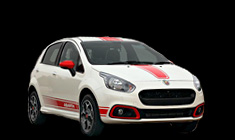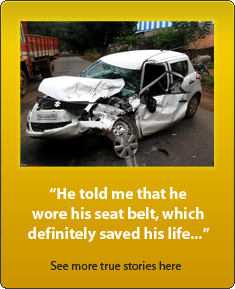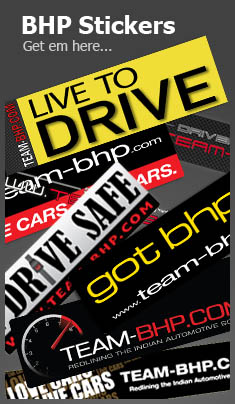News
2025 BYD Sealion 7: Our observations after a day of driving
Out on the highway, the Sealion 7 is a very strong performer. It can get up to triple-digit speeds and maintain them without effort.
Driving the BYD Sealion 7 Performance
Under the bonnet is a 58-litre frunk without a cover:

The Sealion 7 uses BYD's e-Platform 3.0 which is shared with the Seal sedan. As it is an EV-specific platform, the batteries and powertrain have been designed with the EV-specific requirements in mind. This platform comes with cell-to-body technology which integrates the battery and the vehicle body floor together making the battery's sandwich structure evolve into a sandwich structure for the complete vehicle.
As mentioned earlier, the Sealion 7 comes with an 82.56 kWh BYD Blade battery pack. Additionally, the car gets a Lithium Iron Phosphate (LFP) low-voltage battery instead of a lead acid battery. BYD claims that this battery is up to 6 times lighter than a conventional low-voltage battery. It has 5 times better self-discharge consumption and a lifespan of 15 years.
We got to drive the Performance variant which gets all-wheel drive and an electric motor that develops 523 BHP and 690 Nm. It has a motor speed of 23,000 rpm. With your foot on the brake pedal, hit the Start/Stop button to bring the electric motor to life. Shift to ‘D’ mode, take your foot off the brake pedal and the car gets off the line in a very smooth manner.
In the city, you will appreciate the Sealion’s smoothness. The power delivery till part throttle is linear and predictable. No jerks from gearshifts and no engine sound means it is an extremely refined experience. Floor the A pedal and you will be greeted with instant acceleration. Performance is strong with power available right from the get-go. BYD claims a 0-100 km/h time of 4.5 seconds, which, despite the car's 2,340 kg kerb weight, is easily believable. You’ll dart ahead of most cars when the signal turns green.
Out on the highway, the Sealion 7 is a very strong performer. It can get up to triple-digit speeds and maintain them without effort. Overtaking slower vehicles is very easy. Just floor the accelerator pedal and you will zoom past the car ahead. You'll hit silly speeds effortlessly and not even realize it due to the lack of drama (engine noise, etc.). BYD claims that the Sealion 7 can touch a top speed of 215 km/h. However, if you drive hard, the range will drop faster.
There are 3 driving modes to choose from and unlike some other cars, these aren't gimmicky. They're mapped specifically for different driving styles and also change the steering weight.
- Normal Mode: This is the default mode to drive in and works well in the city as well as on the highway. It is a good balance of power and economy. The steering is light in this driving mode.
- Eco Mode: When you want to extract maximum range, this is the mode to engage. The throttle response is dumbed down which results in a smoother drive. However, you never feel that the car is lacking power. There’s still enough power on tap to keep up with the traffic and make those quick overtakes. We found this mode to be the best for driving in the city. The difference in steering weight from normal mode is very small. It almost makes the Normal mode redundant.
- Sport Mode: The throttle response is sharpened, but power is still delivered linearly. It doesn't feel jerky for day-to-day city driving. Push hard and it provides tremendous acceleration. One thing to note is that driving in Sport mode eats up battery faster. So it's best to use this mode on the highways when you want to have some fun while driving. The steering is firmed up in this mode. The brakes feel a little sharper too.
Additionally, there’s a snow mode for better traction in snowy conditions.
Insulation sheet under the bonnet:

Windshield washer fluid reservoir is placed on the left:

Regenerative Braking
BYD has kept it simple with regenerative braking. There are only 2 levels – Standard and High. The Standard level is barely noticeable and if you have the car in this mode, you might end up using the brakes a lot. The High level very much resembles engine braking in IC engine cars. It’s not very intrusive and you won’t be getting a head nod every time you lift off the accelerator. It’s great for driving around in the city as well as on the highways. People wishing to do hypermiling will wish for stronger regeneration from the motor.
Noise, Vibration & Harshness (NVH)
As is the case with EVs, the Sealion 7 is also super quiet. There’s no engine or gearbox to make any noise, so the overall driving experience is silent. The windshield and front windows feature soundproof double-glazed glass making the car cabin extremely quiet.
At highway speeds, the wind noise is well controlled and the tyre noise is par for the course. The motor spins silently at high speeds and the whine is very well controlled.
Range
The Premium and Performance variants come with a claimed range of 567 km and 542 km, respectively. That is however the NEDC (New European Driving Cycle) range which is an indicated number. In real-world driving conditions, you can expect lower figures. We were not able to perform a real-world range test in the short time that we had with the car. We’ll wait for some ownership reviews for a clearer picture of the car's real-world range.
Charging
When you buy a BYD Sealion, you get a complimentary 7 kW home charger along with free installation. BYD has not shared the charging time though. If you ever run out of battery, you can always contact BYD’s roadside assistance.
The car has an AC charging port - Type 2 (11kW) as well as a DC Charging Port - CCS 2 (150kW). You also get a 3kW portable charger that can be plugged into any 15 Amp socket (the larger 3-pin sockets used for ACs and fridges), but that would take a very long time to charge from 0-100%.
Suspension

Ride Comfort
The Sealion gets a double wishbone suspension at the front and multi-link suspension at the rear. It comes with frequency selective damping shock absorbers. The Performance variant rides on 20-inch wheels shod with 245/45 section tyres. The low-speed ride is firm and all the cracks and bumps on the road are felt inside the cabin. What's nice is that the suspension works silently. The recommended tyre pressure is a rather high 42 psi and at this pressure, you do feel a lot of the road. Dropping the pressure while driving in the city might make the ride more comfortable.
At higher speeds, the ride does improve, but big potholes will register themselves inside and you will have to be careful while tackling them.
The Premium variant runs on 19-inch wheels slightly taller rubber. It might have a better ride.
Handling & Dynamics
In a straight line, the Sealion 7 feels very stable. It doesn’t feel nervous and maintains its composure at high speeds. The stiff suspension keeps the car planted while going over some undulations or expansion joints.
Coming to handling, the body roll is very well controlled and the Sealion 7 changes direction easily without any unnerving incidents. The Michelin Pilot Sport tyres that our test car was shod with provided excellent grip at all speeds. Even on hard cornering, the Sealion 7 never felt nervous.
Steering
The Sealion 7 comes with an electric power steering. This is a nice unit and easy to operate as well. It is very light at city speeds which makes it very user-friendly. The steering weighs up fairly well on the highways. It is accurate but relays little feedback.
Braking
The Sealion 7 has ventilated and drilled discs at the front and ventilated discs at the rear. The Performance variant gets red calipers. The car has good stopping power and emergency braking situations are handled well too. On the flip side, the brake pedal lacks feel and takes some time to get used to.
Continue reading the discussion on the BYD Sealion 7 on our forum.



















